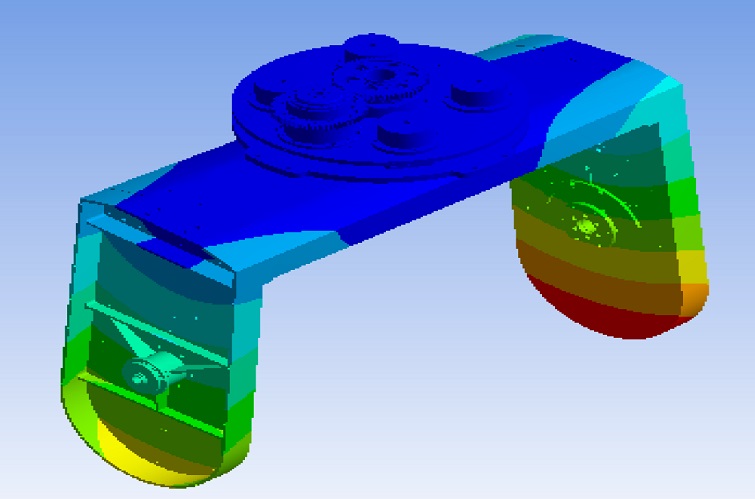ANSYS DesignSpace is a tried and tested structural analysis solution for engineers and designers looking to leverage the validated and widely used ANSYS Mechanical solver in the same environment as higher level tools. The same intuitive and powerful tools that enable fast setup, solving and post-processing are available to DesignSpace users.
A tree-driven environment that provides a logical top to bottom workflow with meaningful feedback means that even occasional users can be productive.

More About ANSYS DesignSpace
- Structural, thermal and modal analysis enable you to study a range of loading conditions that can be combined to better represent real-world scenarios. Thermal results can be applied to a structural analysis to look at thermal expansion scenarios.
- Stressed conditions from a structural analysis could be used to simulate pre-stressed modal analysis to find natural resonant frequencies of parts and assemblies.
- Setting up models with multiple parts means that the interaction between these parts must be well defined. An automated tool to detect and define contact regions ensures that you merely need to review settings before proceeding with a solution. Tools are available to tune settings to make sure the automated tools work exactly as needed.
Capabilities of ANSYS DesignSpace
All of the ANSYS Mechanical products are able to connect to leading CAD systems and work with defined parameters to drive design studies, or use neutral files which can, if needed, be prepared with SpaceClaim or used as they are directly.
Easily generate contact interfaces between parts in an assembly. Automated contact detection speeds up the preparation time involved in modeling large assemblies.
You can read native computer-aided design (CAD) geometry or stand-alone geometries into ANSYS structural analysis software and create accurate meshes on solid, shell and beam models.
Solve static analysis and analyze linear buckling. Examine deflections, stresses and strains on assemblies, part by part, or at the feature level.
The ANSYS Workbench environment can create linked analyses, which are useful for thermal stress studies, for example, and parametric models.
Determine the vibration characteristics (natural frequencies and mode shapes) of designs, in pre-stressed or stressed conditions, so you can better predict your product’s real-world behavior.
Explore designs and efficiently document the results. All technical data and pictures of the model are available in a convenient format (HTML, Microsoft® Word or Microsoft® PowerPoint).





